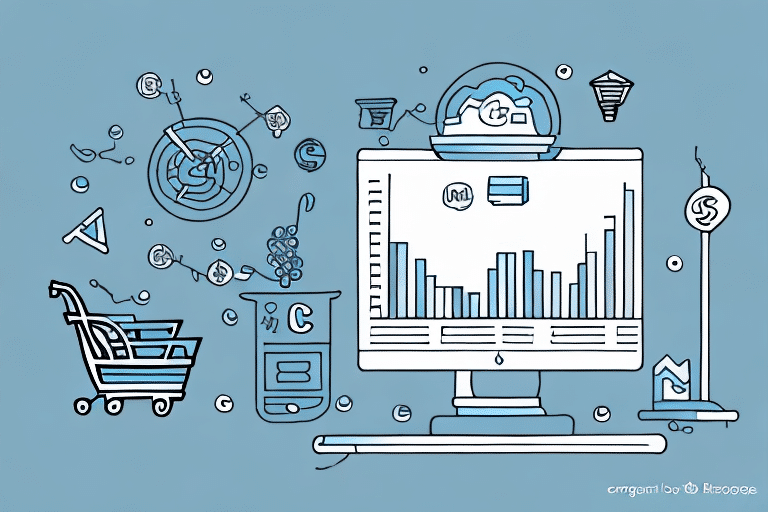How to Leverage Customer Data in Ecommerce Scaling
As an ecommerce business owner or marketer, understanding and utilizing customer data is crucial for scaling your business effectively. Strategic collection, analysis, and application of customer data can lead to personalized marketing, improved product development, and enhanced customer experiences. This comprehensive guide explores the various types of customer data you can gather and how to leverage this information to develop successful scaling strategies.
The Importance and Types of Customer Data
Customer data serves as the backbone of any thriving ecommerce enterprise. It offers invaluable insights into your target audience's behaviors, preferences, and needs, enabling you to make informed decisions that drive growth.
Demographic Data
Demographic data includes information such as age, gender, location, and income levels. This data allows you to segment your audience and tailor marketing messages to specific groups. For instance, targeting younger demographics with trend-focused products can enhance engagement and conversion rates.
Behavioral Data
Behavioral data tracks how customers interact with your website, including the products they view, add to carts, and purchase. Analyzing this data helps in crafting effective product recommendations, retargeting campaigns, and pricing strategies. According to Statista, retargeting ads can increase ad response by up to 400%, highlighting their effectiveness.
Social Data
Social data encompasses information about your customers' activities on social media platforms, such as the content they engage with and how frequently they share your brand's content. This data is essential for developing targeted social media marketing strategies that resonate with your audience.
Customer Feedback
Customer feedback, including reviews, ratings, and survey responses, provides direct insights into customer satisfaction and areas for improvement. This data is instrumental in refining products, enhancing user experiences, and shaping customer service initiatives.
Transactional Data
Transactional data pertains to the specifics of customer purchases, such as products bought, transaction amounts, and purchase frequency. This information identifies high-performing products, profitable customer segments, and effective sales channels, aiding in inventory and marketing optimization.
Personalized Marketing Strategies
Personalized marketing leverages customer data to deliver tailored messages that resonate with individual customer segments, thereby increasing engagement, sales, and loyalty.
Segmentation
By utilizing demographic and behavioral data, you can segment your audience into distinct groups. For example, segmenting by age and location allows for targeted promotions that address the unique preferences of each group.
Product Recommendations
Behavioral data enables the creation of personalized product recommendations based on a customer's past purchases or browsing history. This strategy not only enhances the shopping experience but also boosts cross-selling and upselling opportunities.
Retargeting
Retargeting campaigns focus on customers who have previously interacted with your website but did not complete a purchase. By reminding them of products they viewed or left in their carts, you can significantly increase the likelihood of conversions. Studies by HubSpot show that retargeting can lead to a 10x greater response rate compared to regular display ads.
Personalized Email Campaigns
Segmenting your email list based on customer data allows for highly personalized email campaigns. Customized emails that reflect individual interests and purchase history tend to have higher open and click-through rates, leading to increased sales. For example, sending a thank-you email with a discount on related products can encourage repeat purchases.
Social Media Advertising
Utilizing customer data to create targeted social media ads ensures that your advertisements reach the right audience. By focusing on demographics and behaviors, you can design ads that speak directly to potential customers' interests, increasing engagement and conversion rates.
Product Development and Customer Feedback
Integrating customer data into product development processes ensures that your offerings align with market demands and customer expectations.
Market Research
Leveraging demographic and social data for market research helps identify emerging trends and customer needs. This proactive approach allows you to develop products that fill market gaps and meet specific customer demands.
Customer Feedback
Actively seeking and analyzing customer feedback provides actionable insights into product performance and areas for enhancement. Implementing changes based on feedback can lead to improved products and higher customer satisfaction.
Behavioral Data
Analyzing customer behavior data reveals patterns that inform product features and functionalities. For instance, if data shows that customers frequently search for a particular feature, incorporating it into your product can enhance its appeal.
Competitor Analysis
Examining competitors' customer data helps identify market opportunities and areas where your products can differentiate. Understanding what competitors offer and how customers perceive them enables you to position your products more effectively.
Inventory Management and Predictive Analytics
Effective inventory management ensures that you maintain optimal stock levels, reducing costs and meeting customer demand efficiently.
Sales Data Analysis
Monitoring sales data allows you to identify which products are performing well and adjust your inventory accordingly. This ensures that high-demand items are always in stock, preventing lost sales opportunities.
Customer Behavior Analysis
Understanding customer purchasing patterns helps in forecasting demand for specific products. For example, if a product is frequently viewed or added to carts but not purchased, it might indicate a need for adjustments in pricing or promotion strategies.
Trend Analysis
By analyzing sales trends, you can anticipate future demand and adjust your inventory proactively. Staying ahead of trends ensures that you consistently meet customer needs and capitalize on emerging opportunities.
Seasonal Analysis
Seasonal data analysis helps predict how seasonal changes affect sales. For instance, stocking up on winter products in anticipation of colder months can boost sales and customer satisfaction.
Understanding the Buyer's Journey
Mapping out the buyer's journey through customer data analysis provides insights into how customers interact with your brand from awareness to post-purchase.
Path to Purchase Analysis
Analyzing the path to purchase reveals the stages customers go through before making a purchase. This knowledge allows you to optimize each touchpoint, ensuring a seamless and engaging customer experience.
Post-Purchase Follow-Up
Personalizing post-purchase communications based on customer data encourages repeat business. Sending tailored follow-up messages, such as thank-you notes or personalized product recommendations, fosters loyalty and increases lifetime customer value.
The Ethics of Collecting and Using Customer Data
While customer data is invaluable, it's essential to handle it ethically to maintain customer trust and comply with regulations.
Transparency
Be clear about how you collect and use customer data. Providing detailed information in your privacy policy builds trust and ensures customers are informed about data practices.
Security
Protecting customer data from breaches is paramount. Implementing robust security measures, such as encryption and two-factor authentication, safeguards sensitive information and maintains customer confidence.
Consent
Always obtain explicit consent before collecting and using customer data. Offering customers options to opt-in or opt-out respects their privacy and aligns with data protection regulations like GDPR.
Data Minimization
Collect only the data necessary for your business operations. Minimizing data collection reduces the risk of breaches and ensures compliance with data protection laws.
By effectively collecting, analyzing, and ethically using customer data, you can enhance your ecommerce scaling strategy, driving growth and achieving your business goals.




















